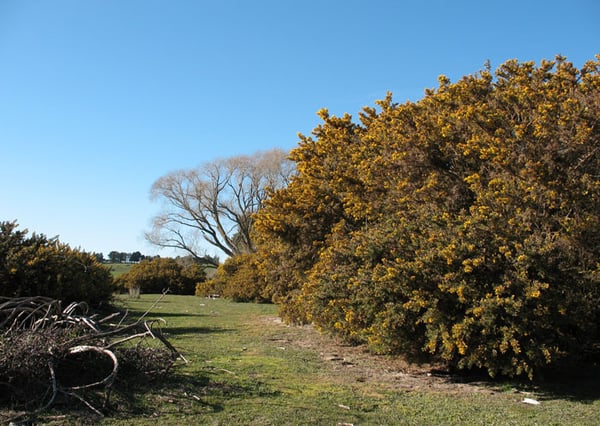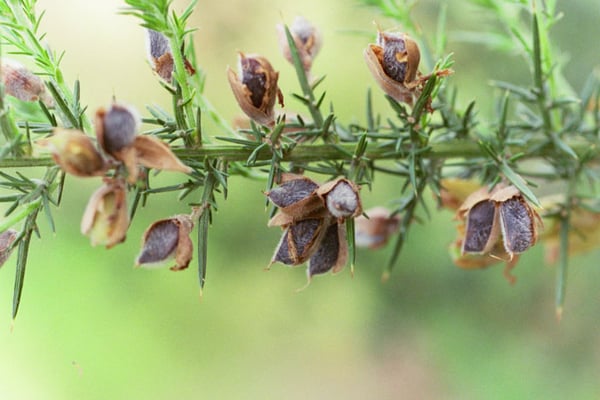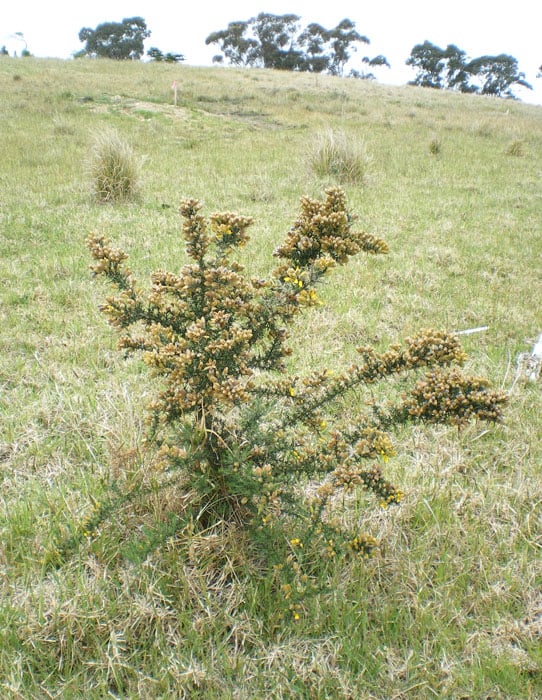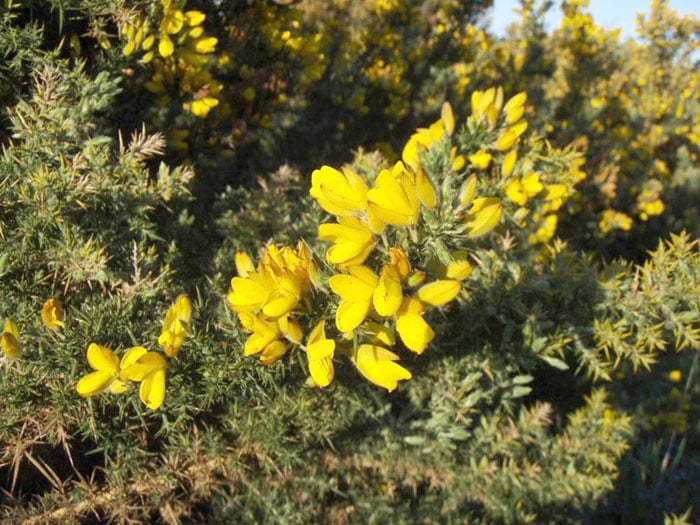Recently, I visited New Zealand for Mystery Creek Fieldays which is in the centre of the North Island. Throughout the entire time that I was there, if I had a dollar for every time a New Zealander would tell be how badly Gorse affects their properties, I'd be a millionaire. Well, maybe not quite, but you get the picture right?
Gorse was a new weed to me, having never heard of it. Not only does it affects both the North and South Islands of New Zealand, it also has a large impact in Victoria as well!
WHAT IS GORSE?
Gorse, or Furze as it is known in Victoria, is a shrub like woody weed, usually growing to 3-4m in diameter. Their stems are green to begin with, changing to brown and then woody once they hit maturity.
All branches end in a green spine up to 5cm long with deep grooves running it's entire length. Branches are hairy, covered with spines and short branchlets that terminate into spines. They also boast pea sized flowers and oddly smell like coconut!

GERMINATION
The seed pods start green turning to dark brown pod once mature. These pods each contain two to six seeds. Gorse reproduces and spreads quickly through seed ejection, transportation of soil, sand or gravel or through livestock, birds, ants or water.
Seeds mainly fall from the plant but pods are known to explosively eject their seeds up to 5m during hot, dry weather. The seeds need to be close to the surface for germination, with seeds not establishing below 8cm of burial.
Seed production is prolific and seeds can remain viable for 30 to 50 years or more in the soil. Seed banks can be as high as 100 million seeds per hectare.
Germination occurs during autumn and spring and young plants flower at approximately 18 months of age.

HOW DOES IT AFFECT YOU?
In Victoria, Gorse or Furze, has been recorded growing throughout the state however heaviest infestations are local in the Central Highlands around Ballarat.
It is considered Weed of National Significance because of it's impact of agriculture, invading all pasture types and reducing grazing capacity. Weeds of National Significance are regarded as the worst weeds in Australia because of their invasiveness, potential for spread, and economic and environmental impacts.
Presence of Gorse can greatly reduce the value of your land and, due to the thick nature of the shrub, it also becomes a haven and perfect breeding ground for feral animals such as rabbits, foxes, feral cats and mice!
Gorse doesn't affect livestock other than grazing capacity. Gorse is unpalatable to cattle and sheep but horses will eat new growth and goats will eat the mature plants.
However in National Parks and other environmental areas, Gorse can compete with native vegetation, and in some cases, displace threatened species. Gorse also increases the risk of bushfires—as it contains flammable oils and retains dead vegetation, increasing fuel loads.

METHODS OF CONTROL
Due to it's long lived seeds, eradication is very difficult. The best course of action to take if you think you have found Gorse on your property is to contact a local council weeds officer who can assist with identification, removal and control.
Otherwise the best course of action for eradication is application of registered herbicides making sure to thoroughly spray all bushes, especially into the depths of the thicket. Hand spraying is the best method for herbicide application.
Other methods are physical removal or mulching, but be aware of the spread of seeds and work to control this.
To read more about Gorse and it's affects, see this management guide regarding Weeds of National Significance.
Gorse - Weed of National Significance - Read Management Guide



